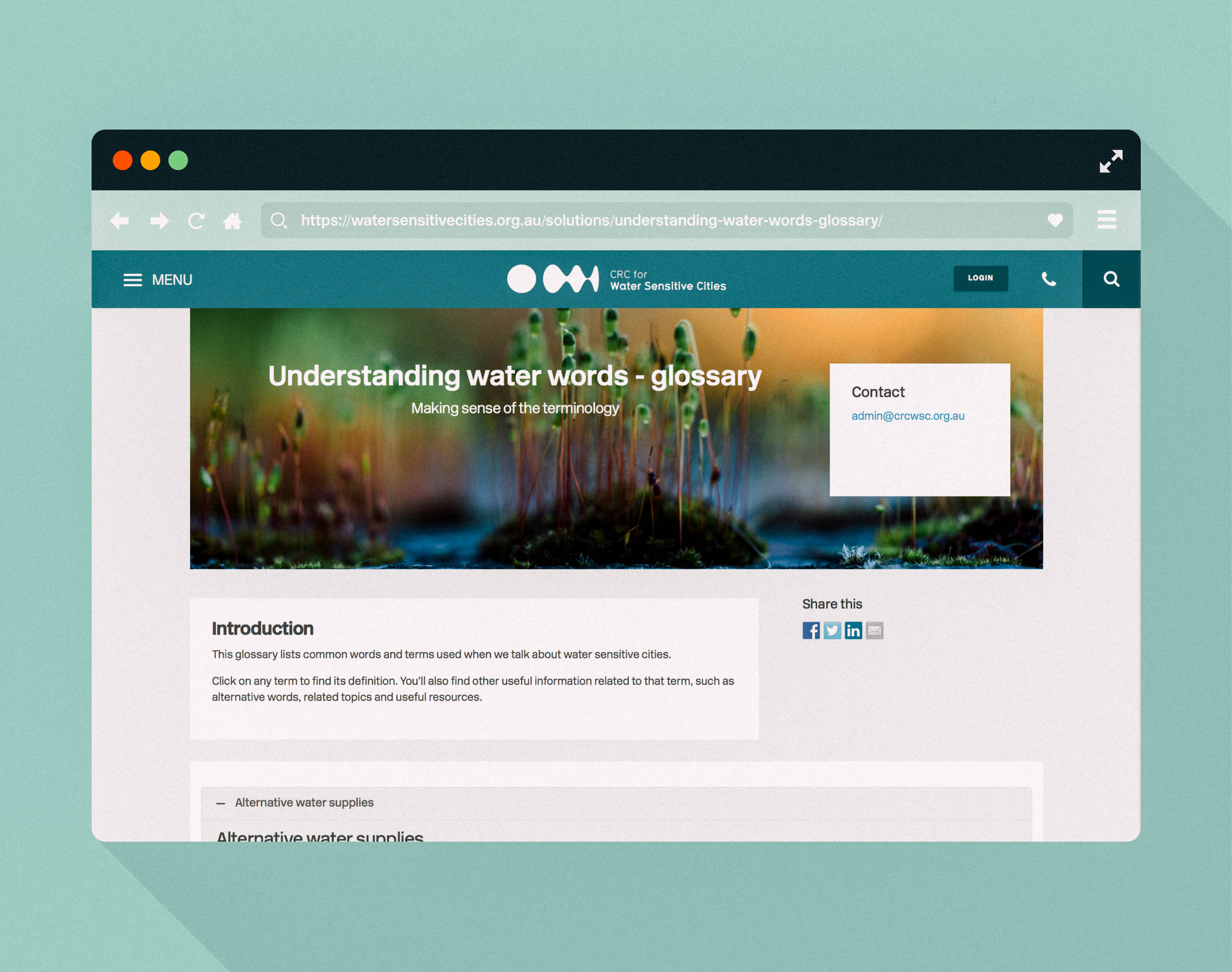Check out our Understanding water words resource
Do you know what an alternative water supply is? How about green infrastructure? And just what is the urban heat island effect? If you’ve ever wondered about these or other water sensitive terms, now you can find the answer. A new resource on our website—Understanding water words—lists common words and terms that we use when we talk about water sensitive cities.

As well as the definition for each term, you’ll find other information related to that term, such as alternative words, related topics and useful resources.
We’ve started with 20 or so common terms we’re often asked about, but we’d love your feedback about what other terms to include. You can email your suggestions to admin@crcwsc.org.au.
Did you know?
- An alternative water supply is the water supplied from sources including stormwater, recycled water, rainwater, desalination and groundwater. These sources provide an alternative to conventional resources such as dams. It can also be known as ‘fit-for-purpose water’ and ‘purpose-specific water’, among other things.
- Green infrastructure is the public and private green spaces in our cities than can provide a range of water cycle benefits if they are managed as an integrated system. These green spaces range in scale from single trees in a city street to golf courses, parks and waterway corridors that can shape the urban landscape. Some are natural, such as areas of remnant native vegetation, while others are more engineered, such as green roofs, green walls, biofilters and raingardens.
- The urban heat island effect is the localised increase in heat (temperature) within urban areas relative to surrounding natural or rural environments, as a result of the greater amount of impervious surfaces and thermal mass within those urban areas. Heat mitigation actions, such as increasing green spaces, limits the magnitude and/or rate of warming within urban environments.